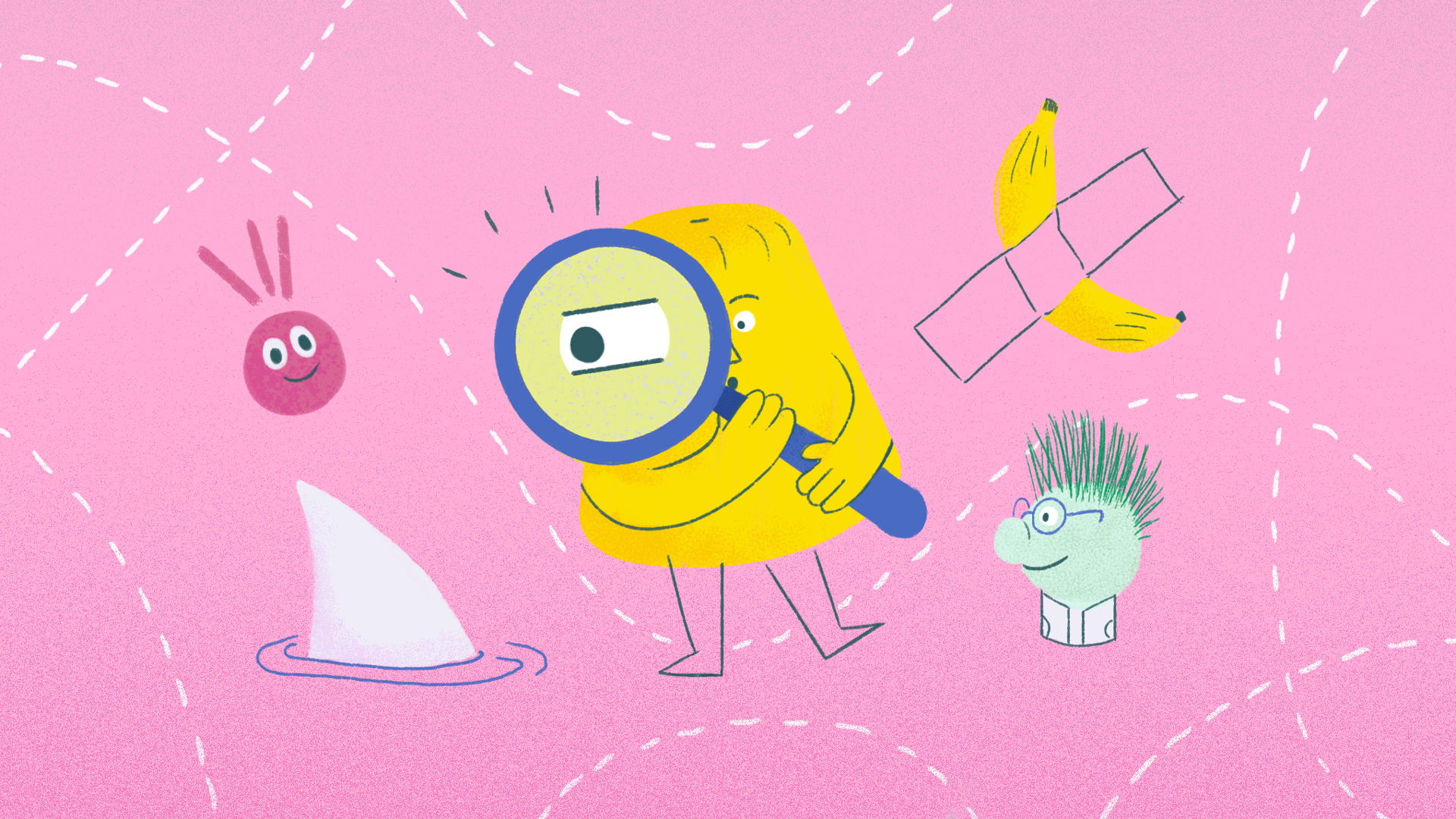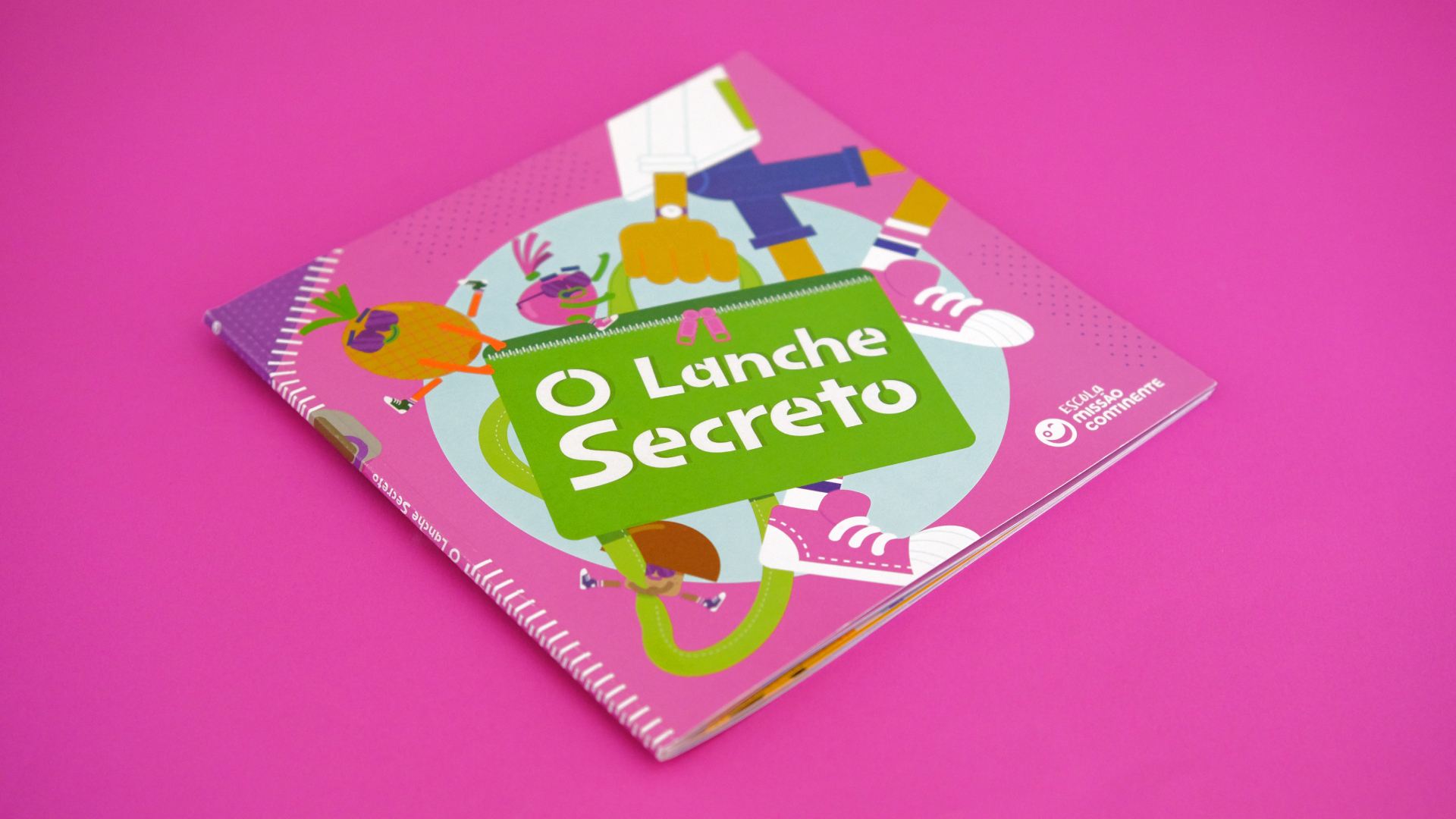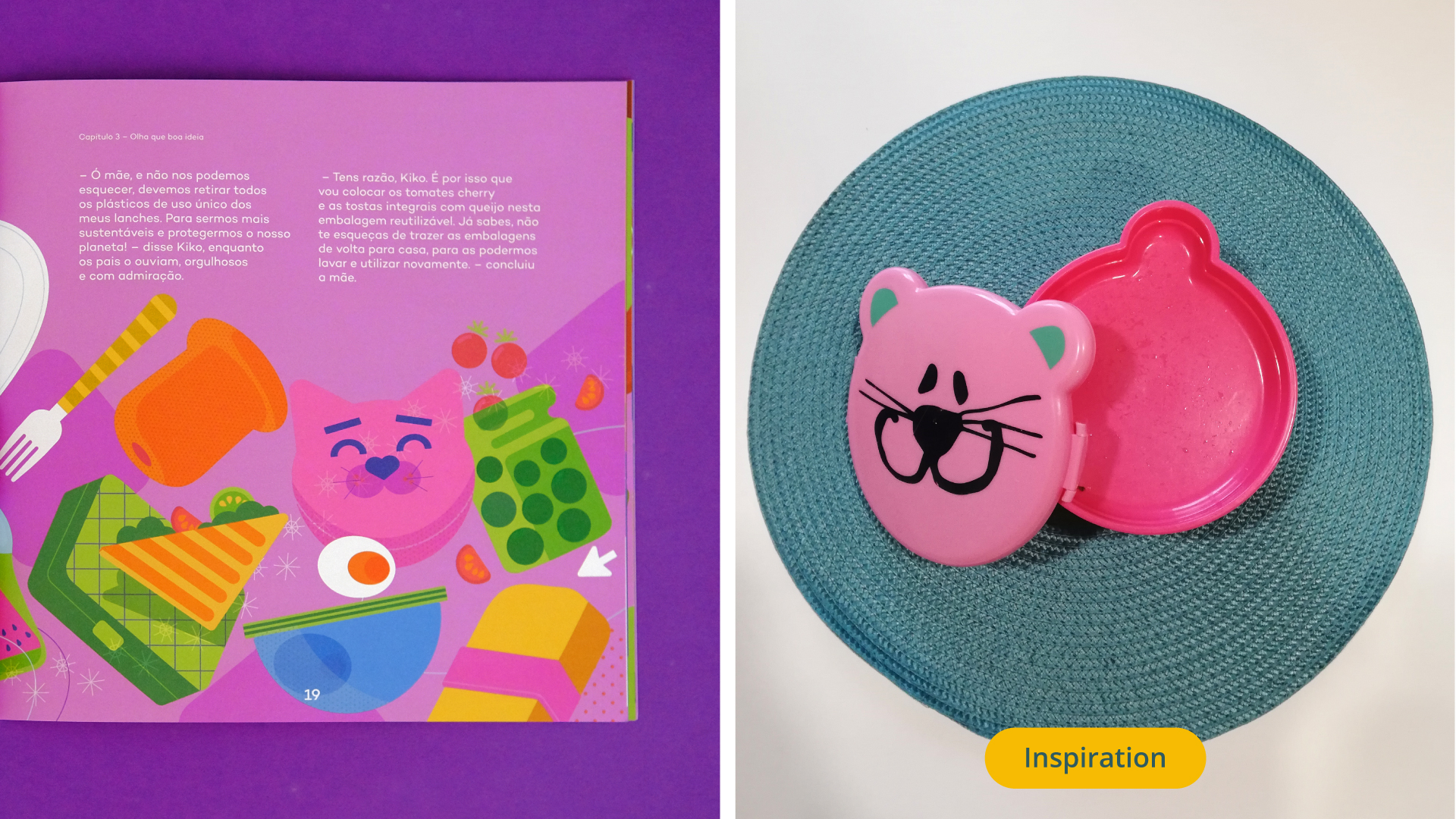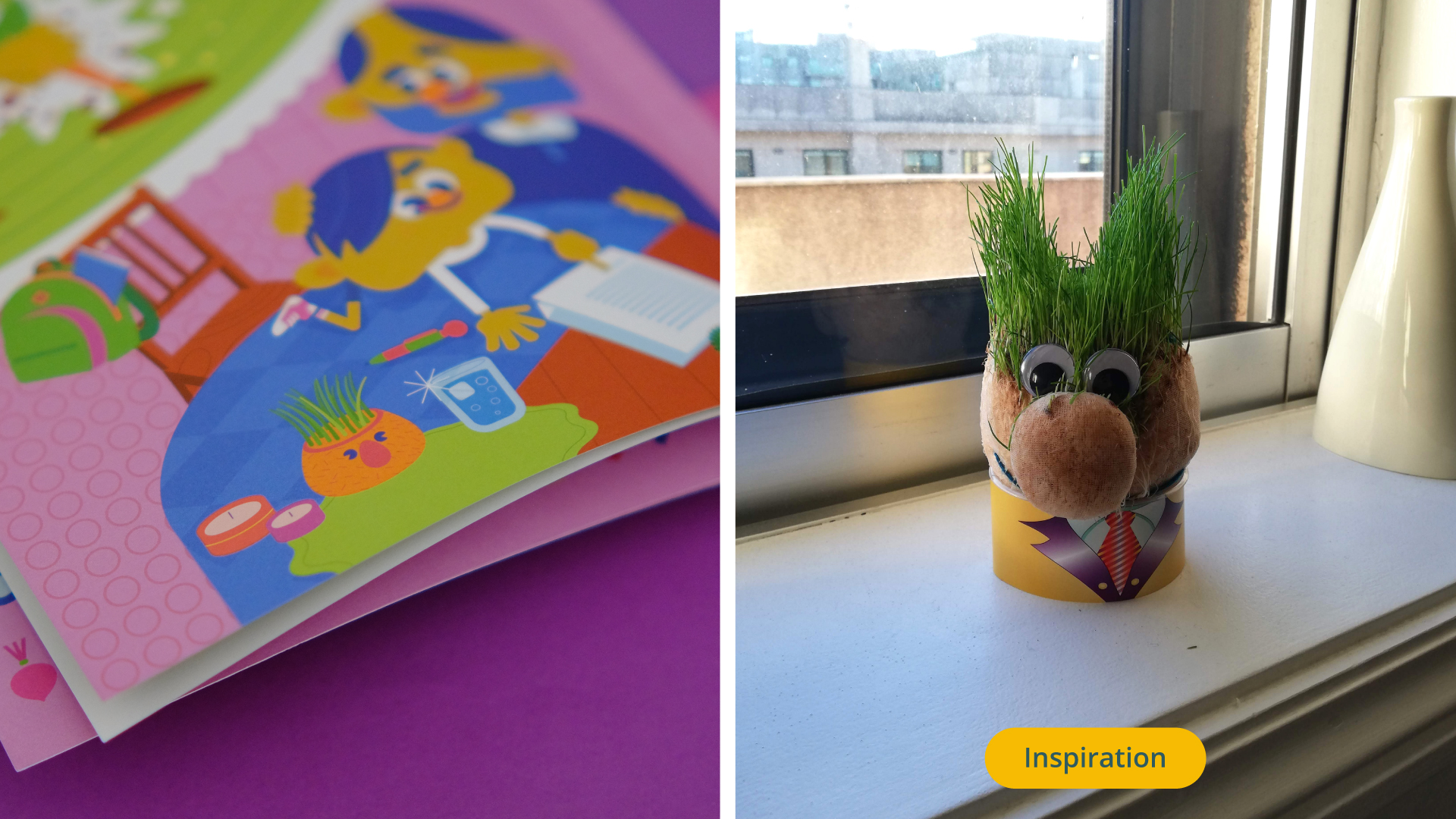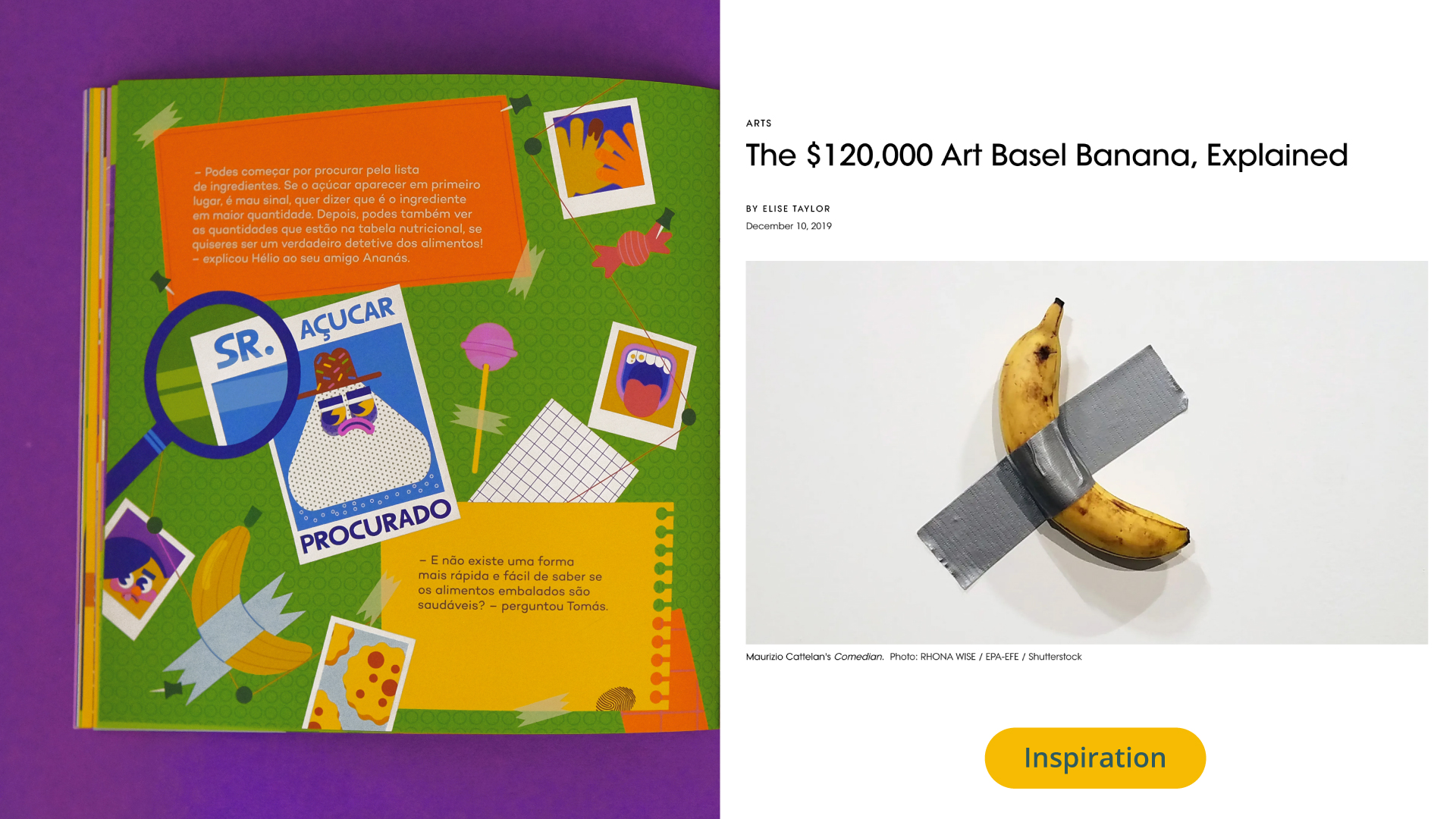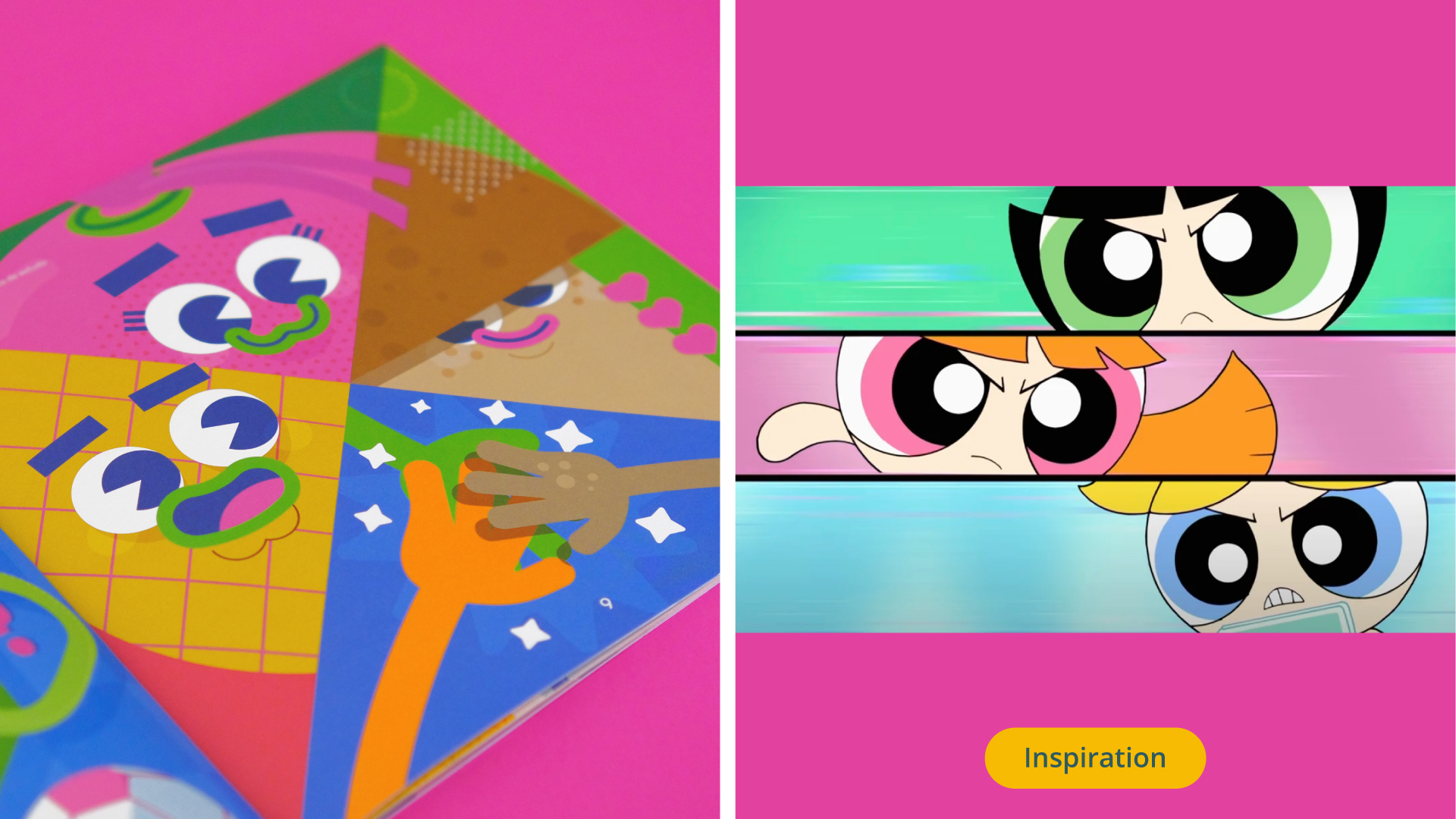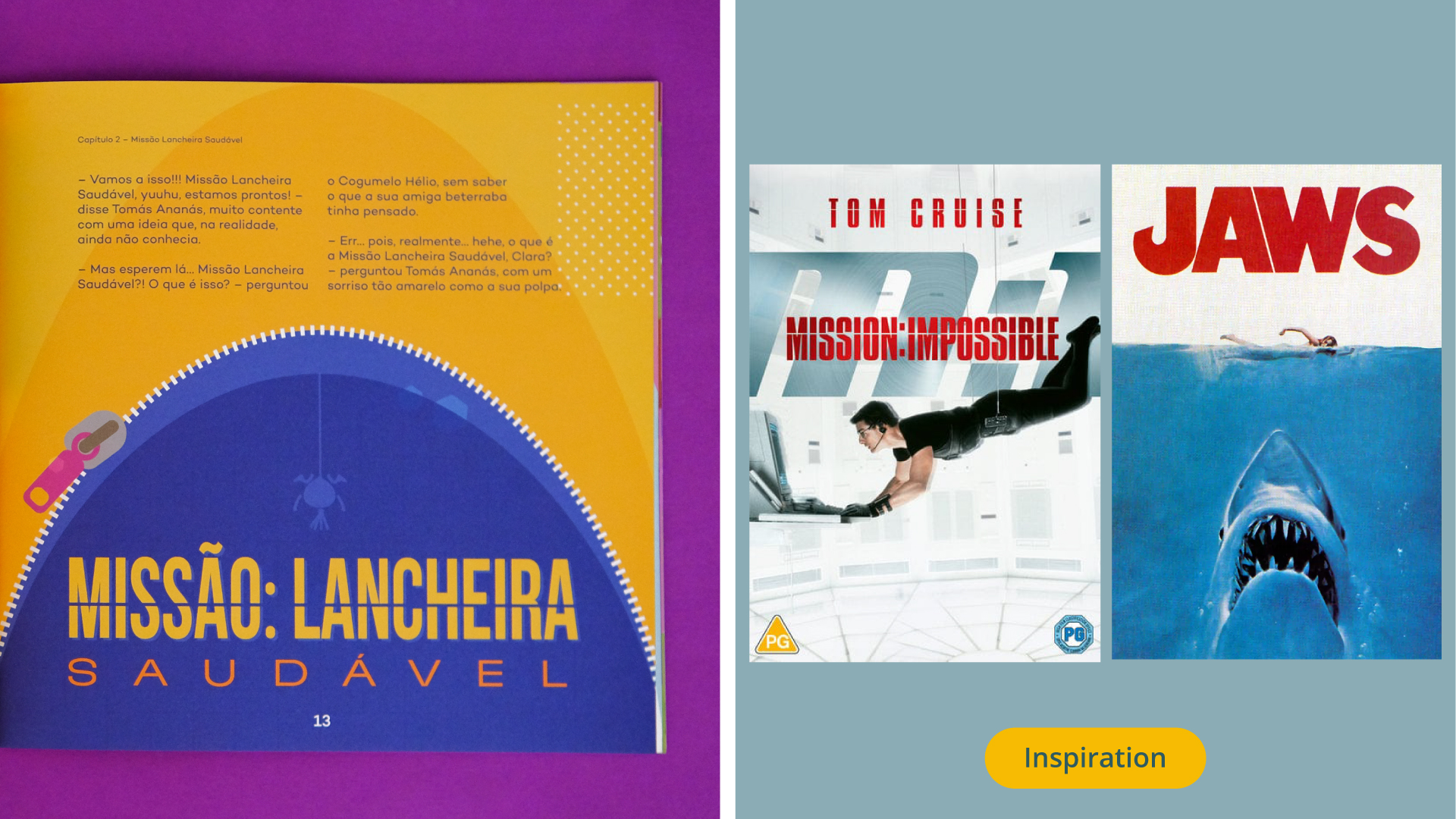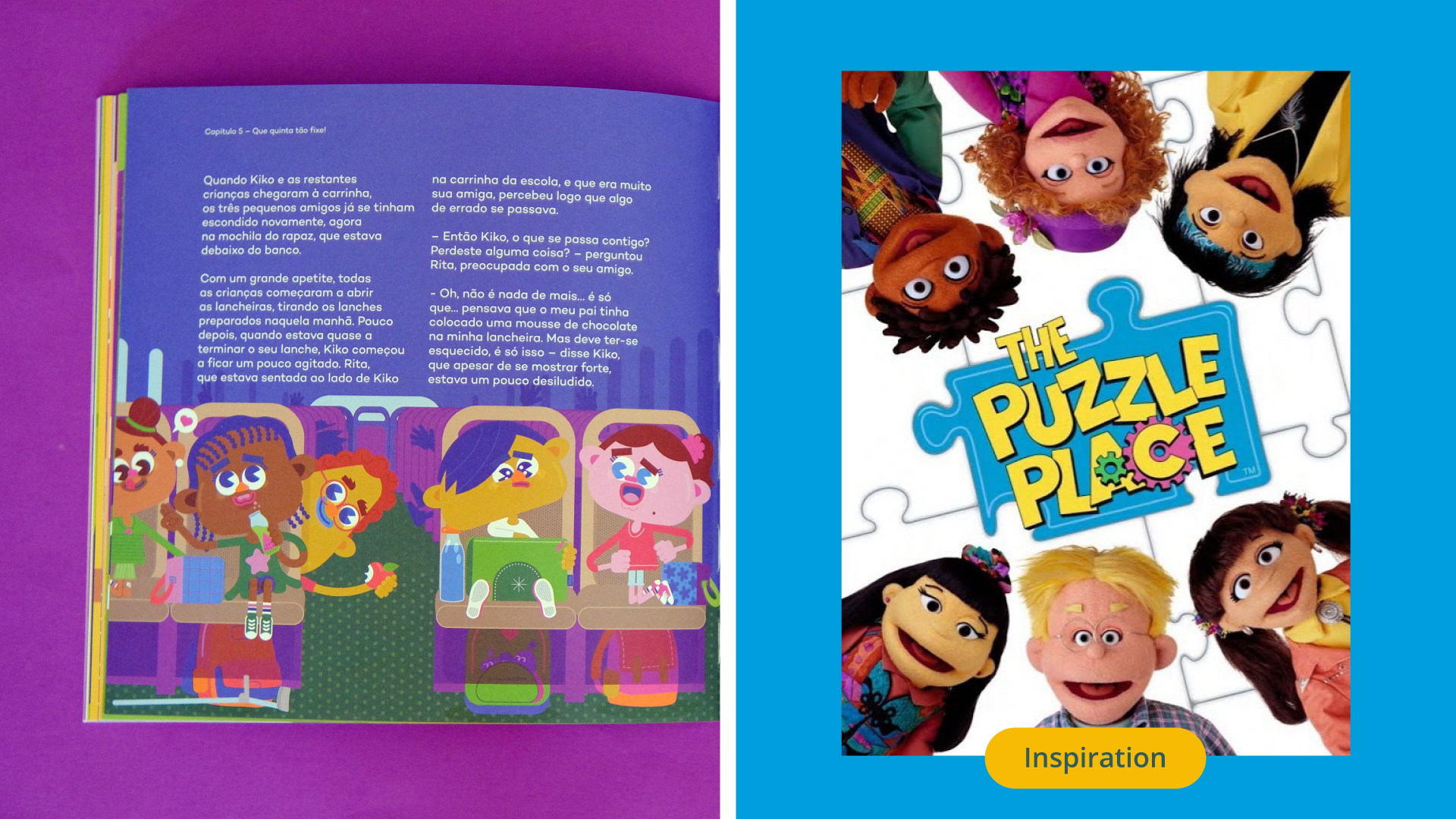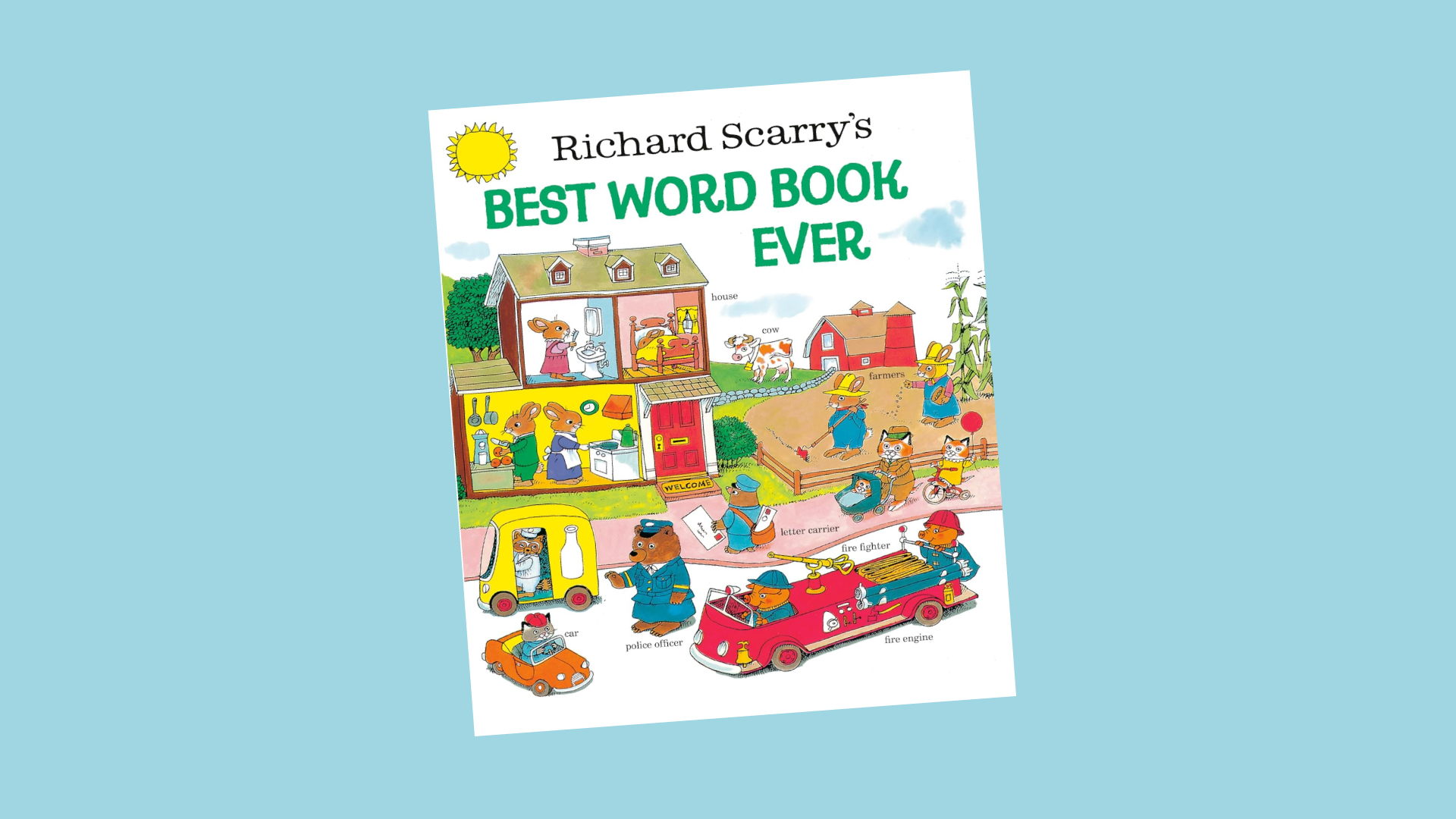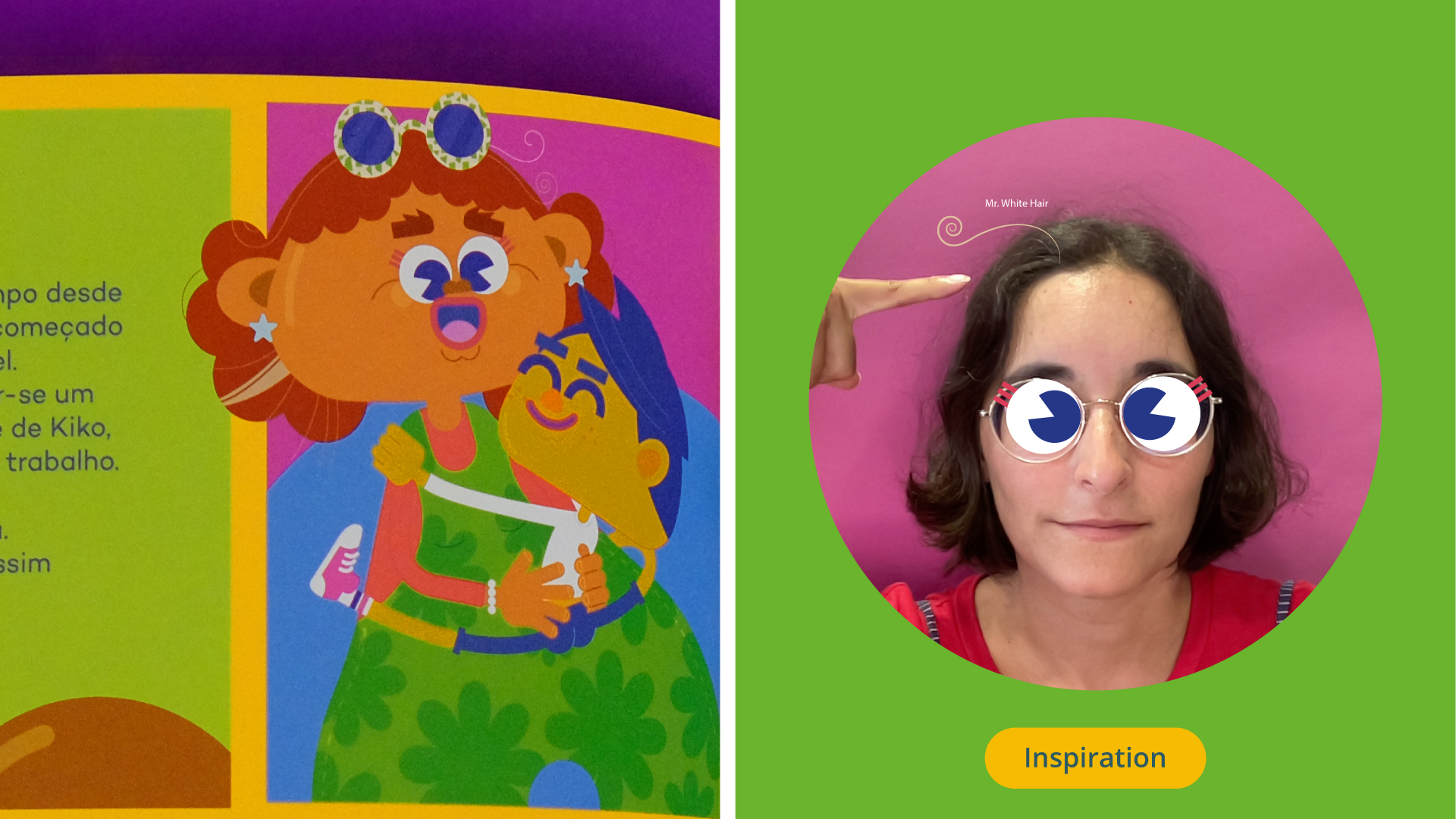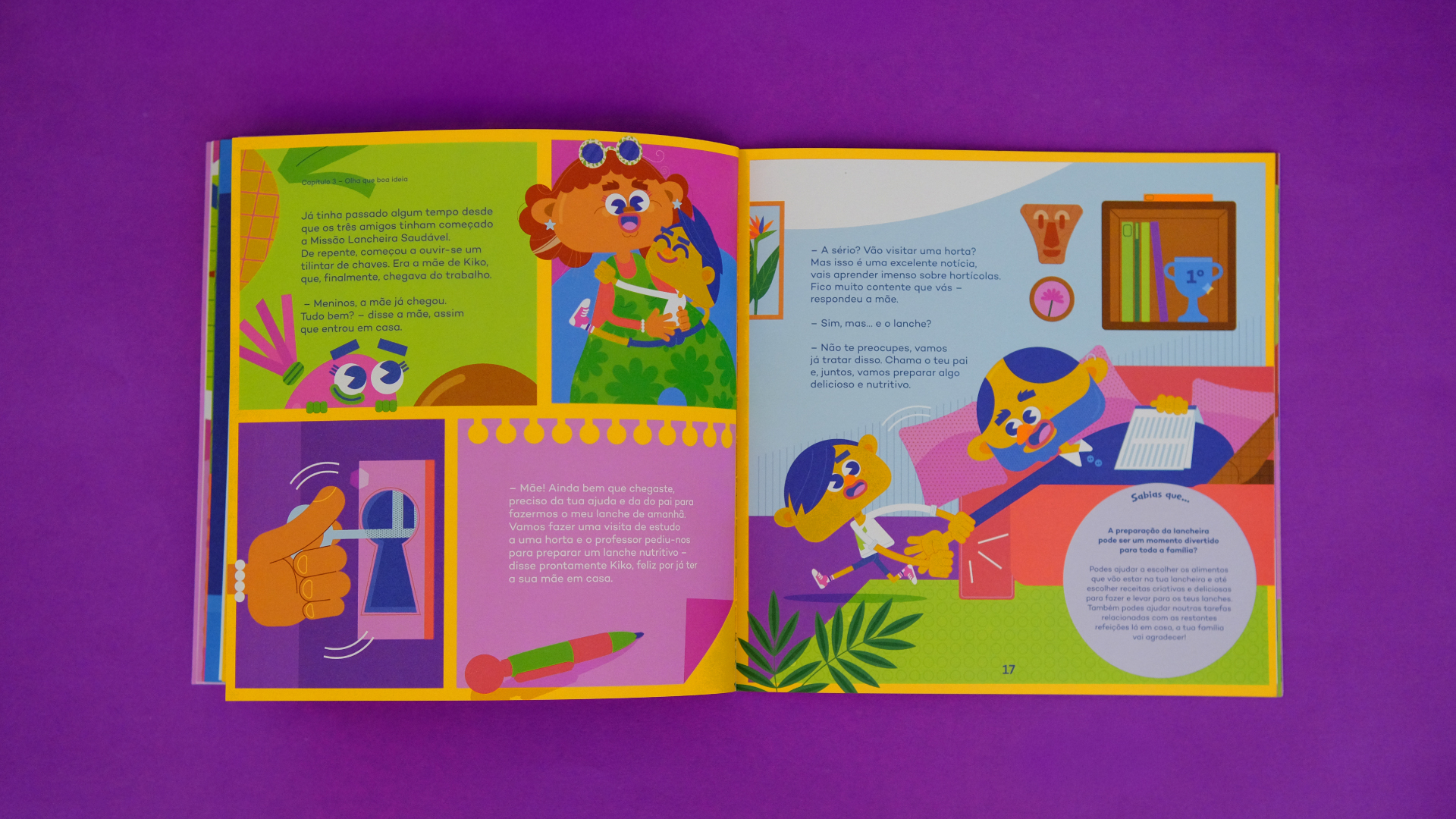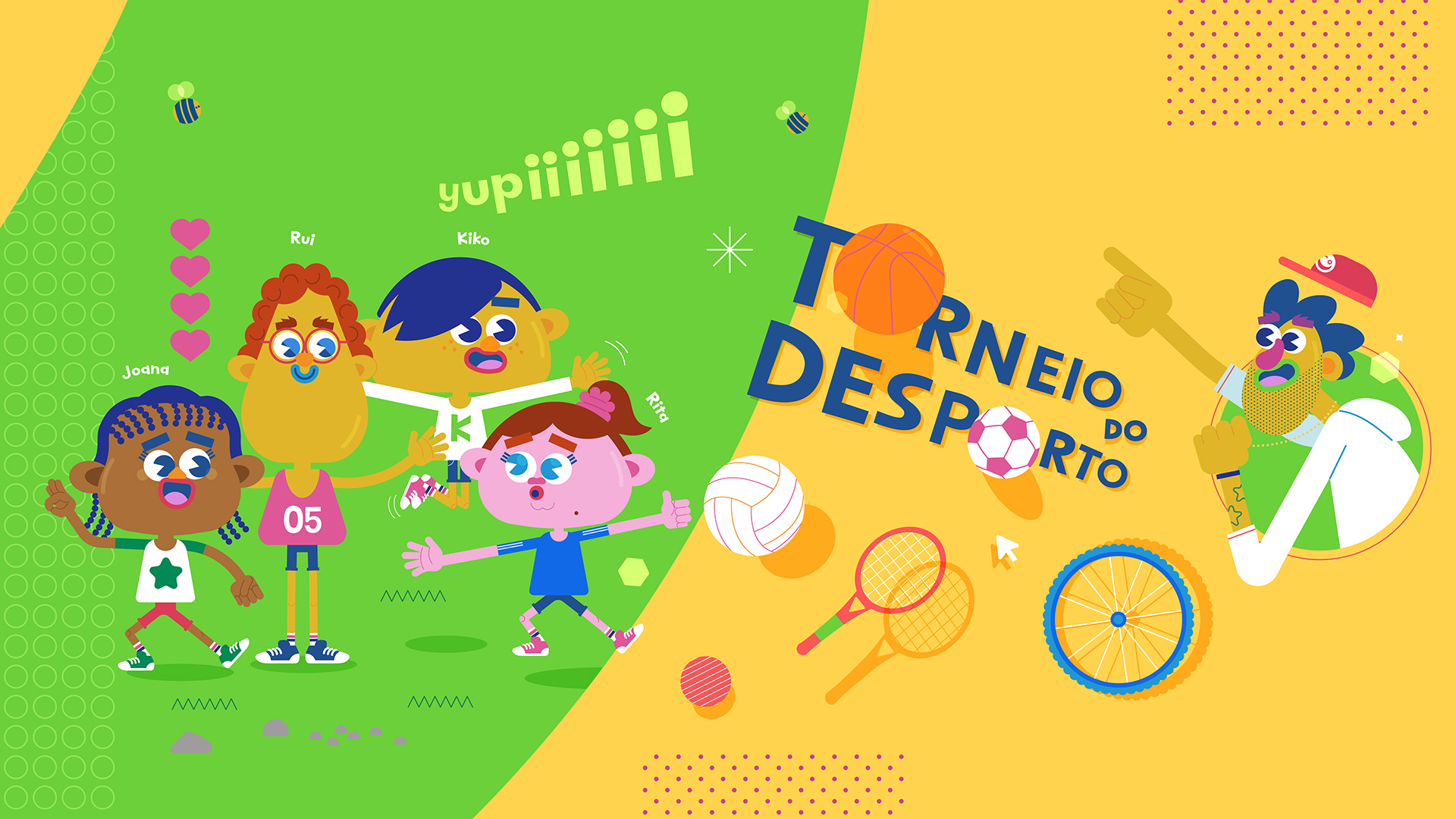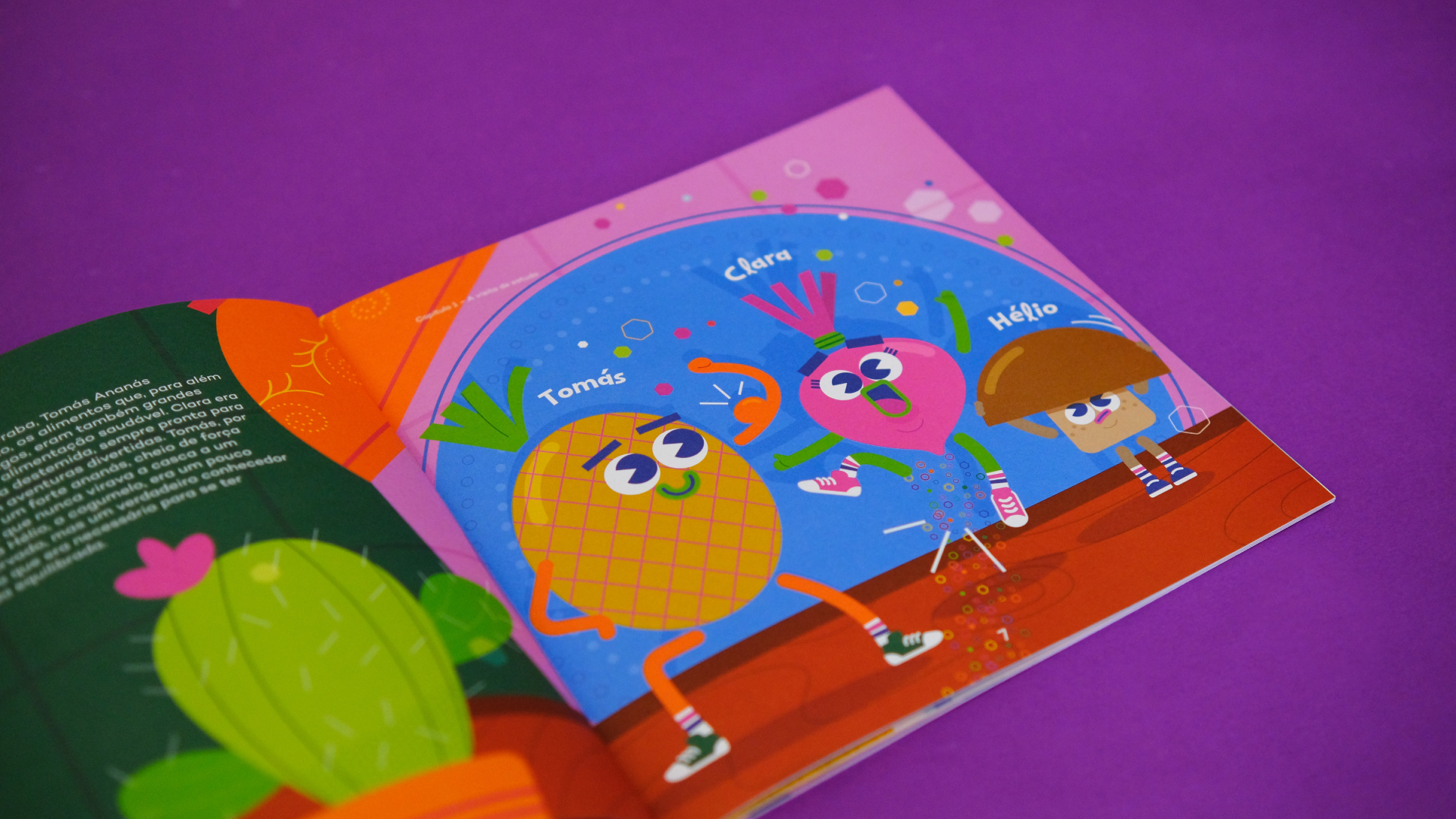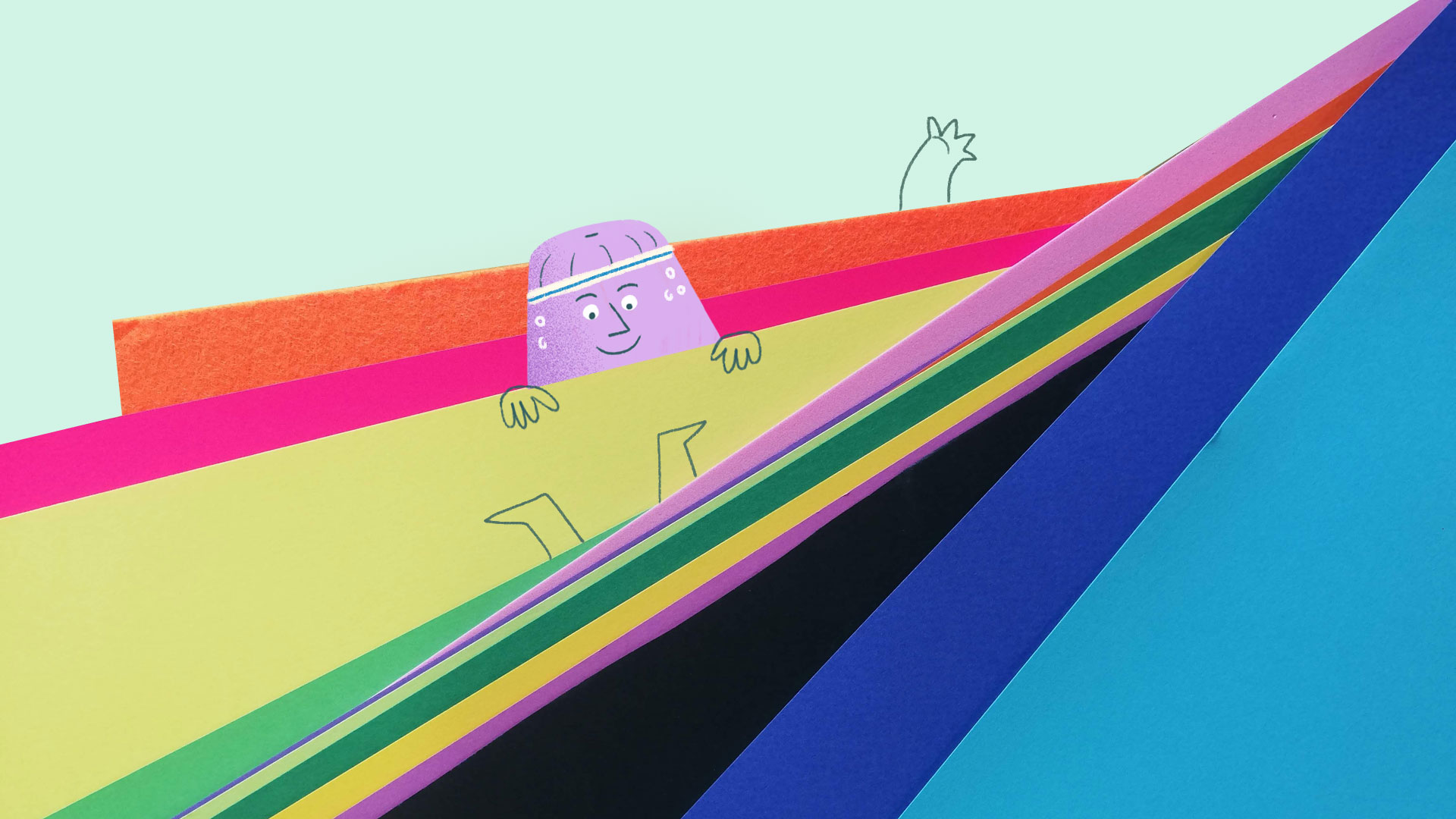This time, we’re bringing you a different kind of content. The new book from the Escola Missão Continente was launched in February (2025), is called “Lanche Secreto” / ‘The Secret Snack”. Is the 4th book released by Sonae and we are happy to continue collaborating (together with MOSSA) on this initiative to promote the best practices for healthy eating distributed to the schools that joined the program in Portugal.
So given the title of the book we took the opportunity to ‘dig deep’ our secrets and understand where our inspirations and references come from.
Some are images we’ve carried with us for a long time, part of our visual culture lunchbox, others are objects that are part of our daily lives.
We can’t always dissect images to understand their origins, it’s like dreams, which blend what’s stored in our cerebral cache with recent life events. But we tried this time. Scroll to see the illustration and what we took as direct or indirect inspiration.
Illustration vs inspiration:
What inspirations shape your creative work?
Each of it could be sub-tagged under inspiration of: personal belongings; modern art; cartoons and films or even easter eggs from previous books but we decided not to save them on these boxes.
From funny tupperwares to the cartoons that marked our childhood, illustration is a medium that allows us to tell a story while also conveying positive subliminal messages. In other words, it lets us show the world as we believe it should be: more representative, more colorful, and more tolerant, even when the story itself doesn’t focus on those principles.
Not all inputs have a message. Some are like small time capsules that mark an era, while others are elements that simply come together harmoniously.
And what values do you try to reflect?
When writing this article I recall an Upworthy article mentioning some changes that were made to a classic Richard Scarry book, a photo comparison made by Alan Taylor in 2005, uploaded on a Flickr album called “The Best Word Book Ever,1963 and 1991”.
It’s so interesting to see the comparisons and the impact they have, which, although it cannot be measured in the lives of young readers, it is certain that the images we reflect in children’s books also reflect real life in society. Therefore, the review of the book ‘The best word book ever’ shows changes such as professions that were only illustrated by male animal characters, were also represented by female characters, as well as representations of household chores, where illustrated tasks were distributed between both genders, as well as many other examples that are worth taking a look at.
At Bavaroise we also make a point of not stereotyping in our illustrations, although it is difficult to escape these molds that we were taught in movies, books and sayings. In the stories of Escola Missão Continente, for example, in the representation of the father of Kiko (the main human character) he has receding hair and an earring in his ear and the mother has wide hips and some rebellious gray hair (when are we going to stop representing anti-aged mothers and fathers?). Kiko’s friends have different skin tones, and one of Kiko’s friends is an athlete and wears glasses, why not?
The food gang, on the other hand, features Clara Beterraba, a brave and adventurous leader of the trio, and her friends Hélio Cogumelo and Tomás Ananás.

